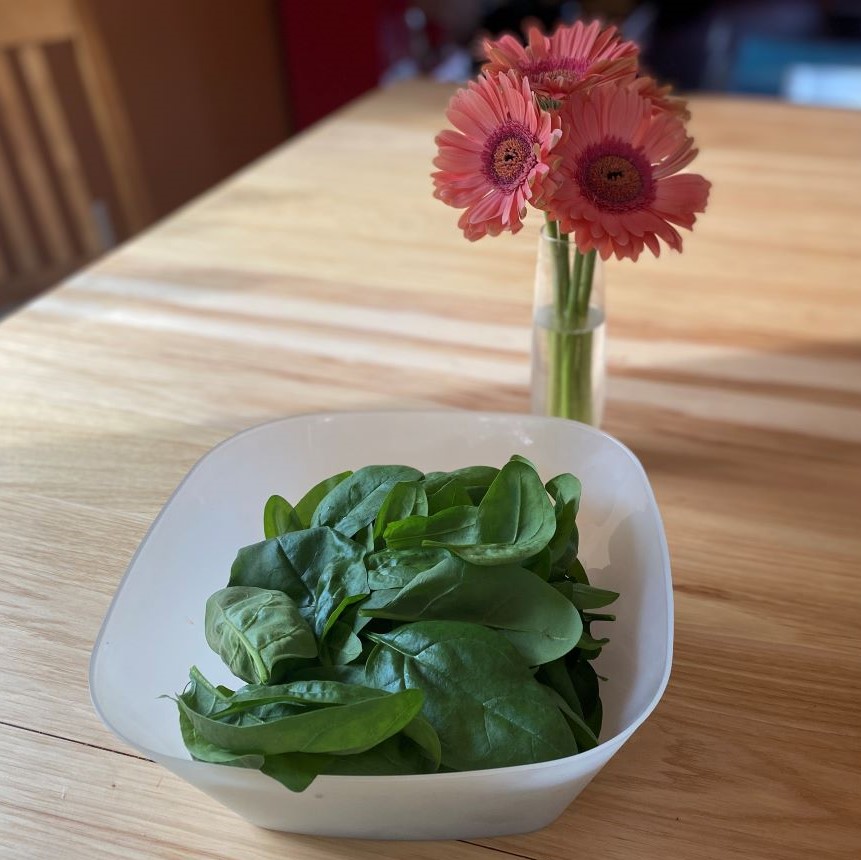I love fresh spinach so that’s why, even though much of the spinach I plant bolts (in other words, goes to seed), I always try again next year. One of the true pleasures of spinach is how quickly it grows. It is one of the first things I plant in the spring, as soon as the ground is workable, and the first thing I eat.
In my experience, bolting is THE challenge with growing spinach in Interior Alaska. Warm temperatures and long day lengths are mostly to blame, but big temperature swings and cold temperatures can also play a role in bolting as well. This article does a good job of explaining how cold temperatures trigger bolting (flowering) in spinach and other crops.

Spinach is usually direct seeded. It’s possible that transplanting spinach could help mitigate bolting, but trials are needed to assess this. Direct-seeded spinach should be thinned to four to six inches, or whatever spacing is specified on the seed packet. In my garden, I often do not get around to thinning my spinach, which might increase bolting rates, although Glenna Gannon, the director of the vegetable variety trials at the Fairbanks Experiment Farm, says that proper spacing did not reduce bolting rates in trials. Consistent watering also can help prevent bolting in spinach. Spinach leaves can be snipped with scissors and allowed to regrow for successive harvests until it bolts, making it inedible.
Continue reading